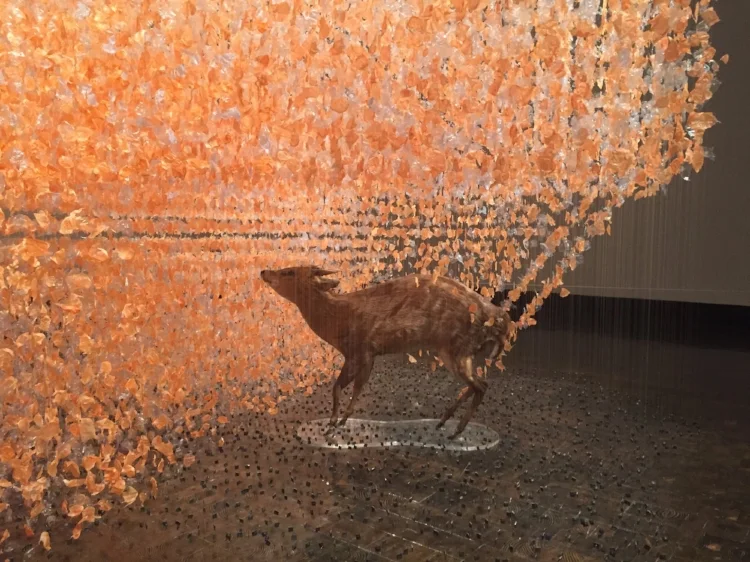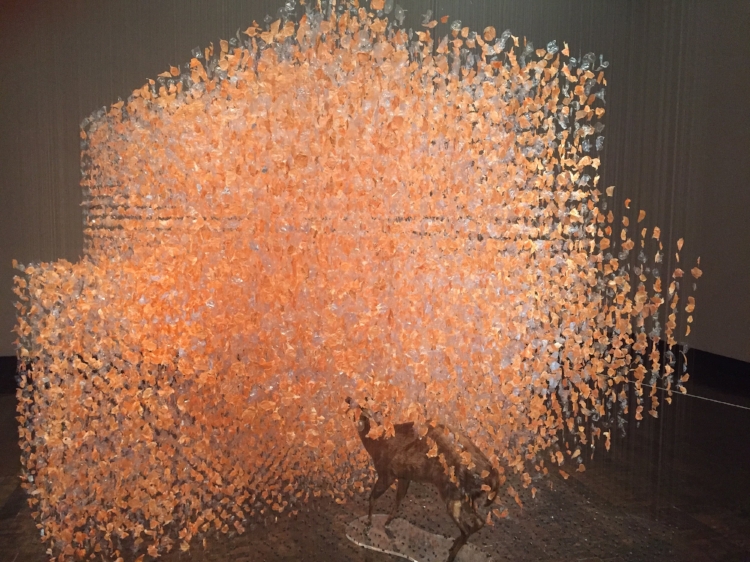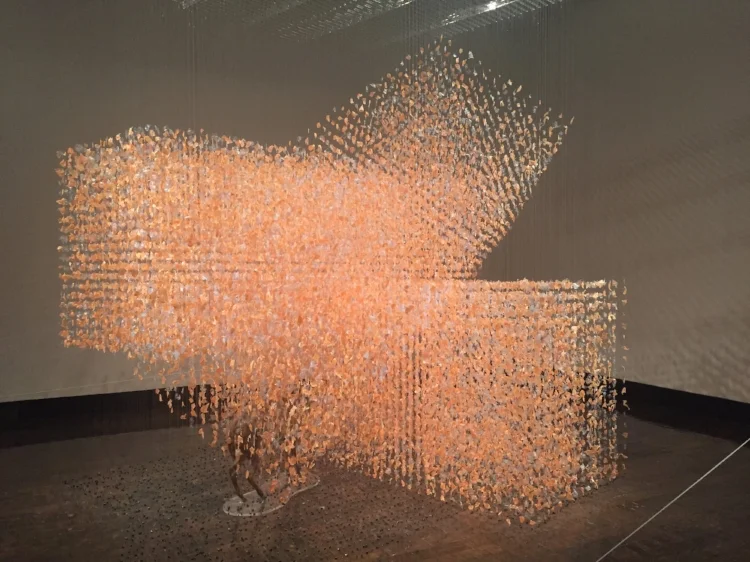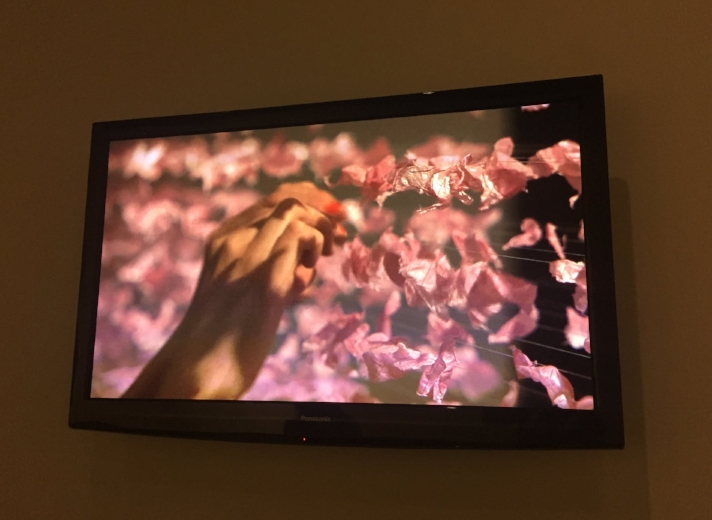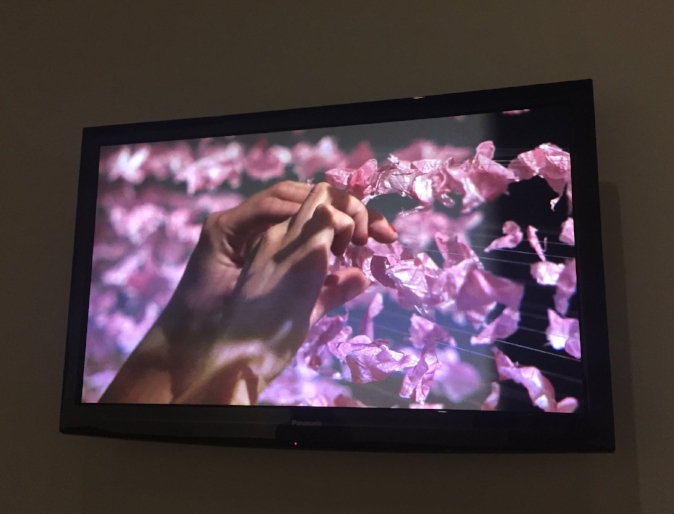Stop Me Feeling... Claire Morgan
"If you go down into the woods today", Claire Morgan
Let me share with you the artwork of Claire Morgan, whose unique works are an exploration of our relationship with the natural world and an awareness of life and death. This is the first solo exhibition of Morgan’s artwork in the United States. Titled, Stop Me Feeling, it is hosted by the Frist Center for Visual Arts in Nashville, Tennessee.
Morgan is a keen and sensitive observer of our natural world, the creatures we share it with and our shared environments. Her three-dimensional installations utilize items collected from her surrounding natural environment (seeds, leaves, insects), as well as discarded environmental objects such as plastic bags, carefully mounted on nylon threads to create geometric forms.
Morgan is one of the current contemporary artists working in taxidermy. The tender display of these animals in her installations exemplifies their fragile roles in their natural environments.
Her hauntingly beautiful centerpiece of this current exhibition titled, If you go down to the woods today, incorporates a (taxidermy) Muntjac - a type of small deer — butterflies, torn polythene, nylon, and thread.
The Muntjac appears to be venturing into the “woods” after a butterfly. Lead dangling a scant inch off the floor, holds the threads perfectly still. Viewers moving around the sides of the three-dimensional installation disappear to the viewer on the other side of the artwork. The Muntjac also disappears depending on the viewers relationship to the piece.
The disappearing element of the Muntjac serves as a metaphor for the fragility of life and the human tendency to search for meaning in what is sometimes out of our line of sight.
The threads contribute to the geometric shape of the artwork, the form changes depending on where the viewer is standing and creates the perception of peering into a forest. The orange pieces of polytene tied to the threads almost seem to glow and serve as “leaves.” Beauty out of discarded common objects.
It is a masterpiece of color and shimmering light from resurrected materials.
"Now I am become Death, the destroyer of worlds" Claire Morgan
An exhibition guide gives insight into Morgan's process regarding taxidermy. "Recently Morgan began making large paintings related to the taxidermy process as well. One of her more ambitious is a triptych (pictured above)....The tripartite form carries certain cultural connotations because of its origins in medieval Europe, where it was used for religious works of art depicting Christ's Nativity and Crucifixion." Morgan uses the canvas as a base for the taxidermy process, integrating it into her finished painting.
An accompanying exhibition video allows Morgan to describe her process in her own words, and express her desire for the viewer to interpret her work, rather than offer her own narrative of its intended meaning. She is an explorer of our relationship with the natural world, and, as the catalog notes: "Her works can... be interpreted as social sculptures that are intended to inspire change, which each of us has the power to effect in our daily lives simply by being less ambivalent in how we treat the earth."
And perhaps each other.
"Within You Without You" Claire Morgan
Morgan's artwork titles are simple words or phrases lifted from everyday language or are borrowed from books or pop songs. Within You Without You, is a play on the title of a Beatles song. The guide states, "The song's message about consumerism and materialism continues to resonate...It explores the theme of metaphysical space between us that prevents us from seeing the focus that unites the universe. The song becomes a soundtrack for Morgan's sculpture and part of the experience."
"Clusterfuck" Claire Morgan
Among her most compelling pieces are those in which she depicts the plight, existence, accidental quandary, or ephemeral quality of her subjects. Their plight could be our own.
Morgan's artwork is a dance with us, the viewers, between what has been discarded or deceased ( taxidermy) and the transformation into delicate, enticing constructions with new beauty to explore.
Morgan's beautiful artwork intensifies the awareness of life's cycle and our shared environment.
Claire Morgan was born in Belfast, Ireland. She now makes her home in Newcastle, England. I hope you will explore more of her work. You might particularly be interested in the video, About Time featured on her website: http://www.claire-morgan.co.uk/home.
These images are reproduced from the exhibition's accompanying video, About Time. They show the fragilty of the discarded elements used in her work, and the intricacies of her installation process.


